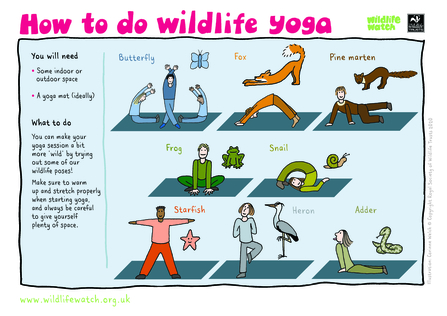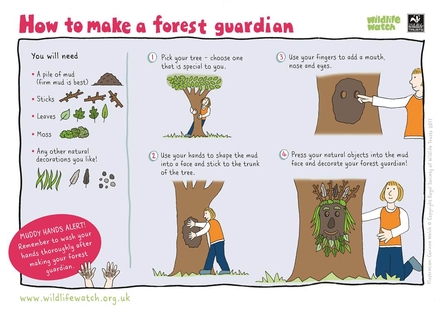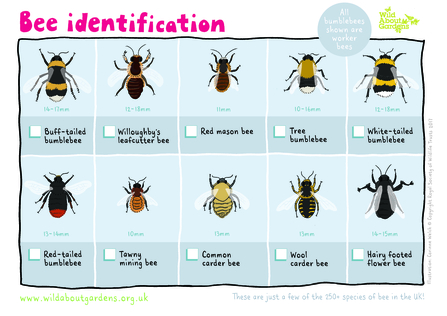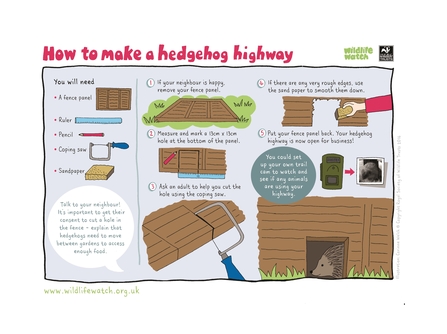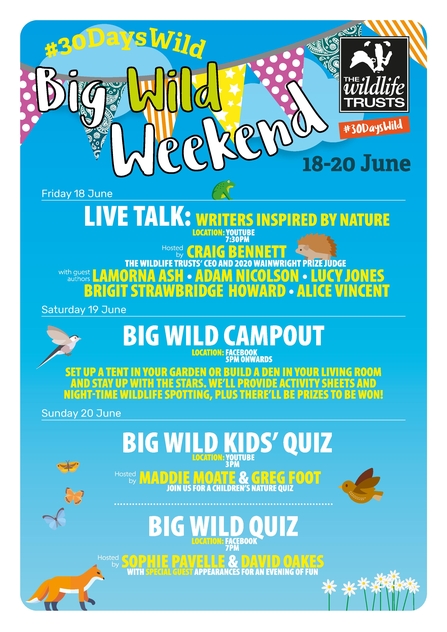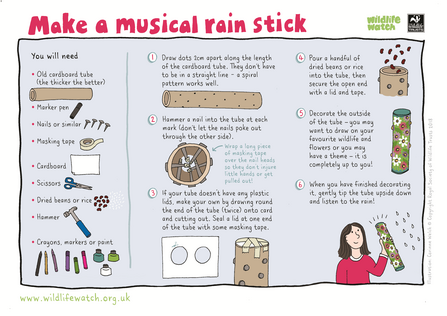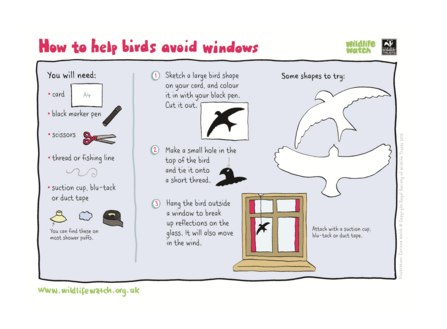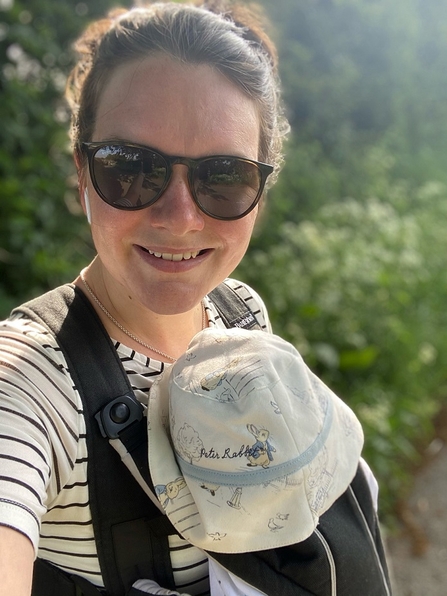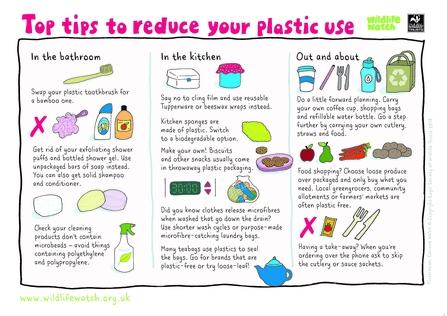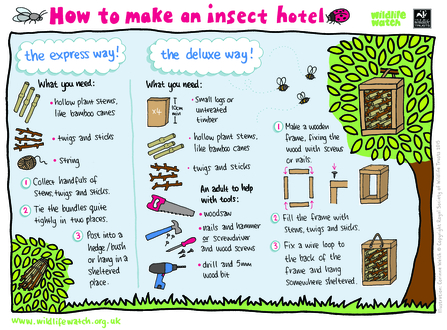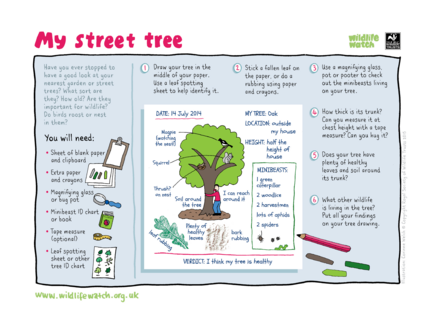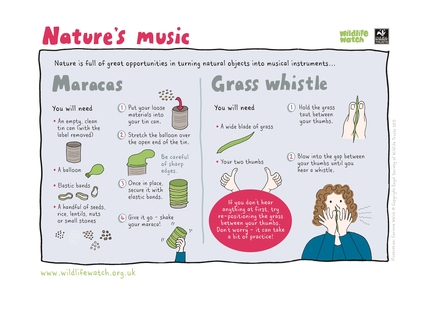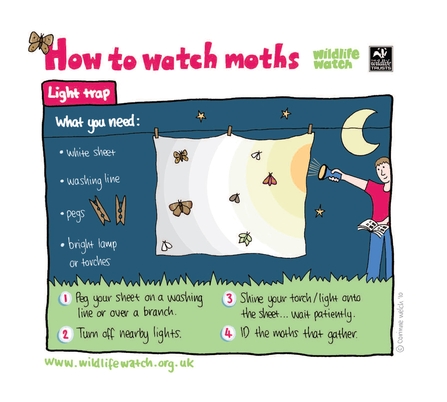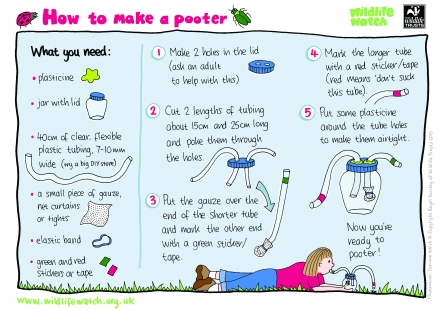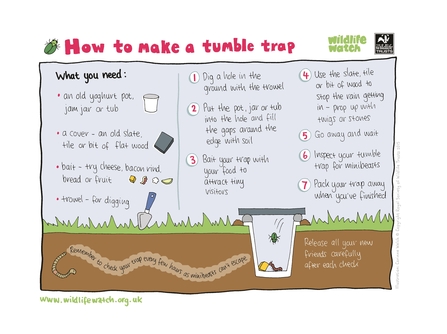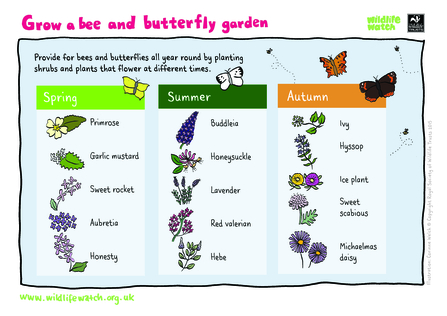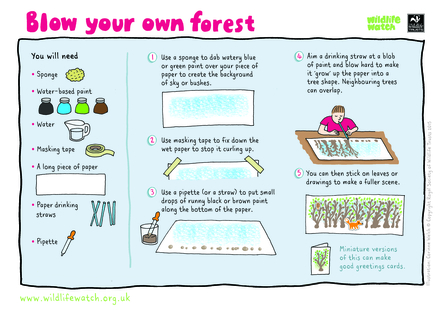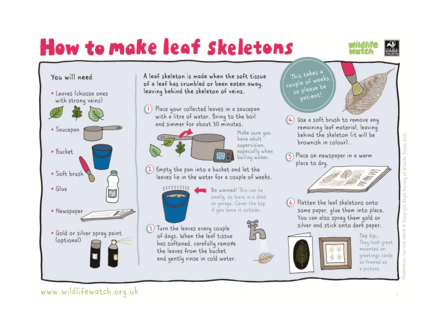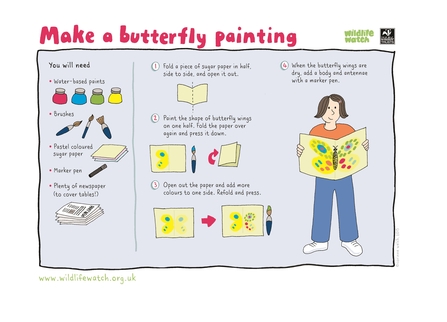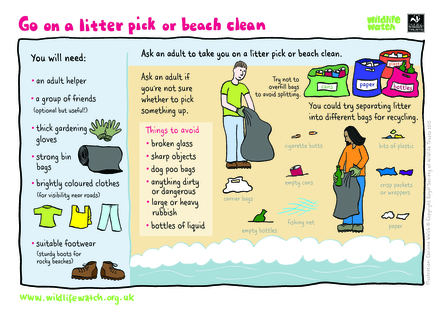30 Days Wild: inspiration and activities for your Random Acts of Wildness
Week 5
Day 29: Look up at the clouds or taste a wild ingredient
Look up at the sky today and take a look at the clouds - what do you see? Can you see different shapes and colours or is it one dense blanket covering the sky?
If there's isn't much to see up in the sky, read the Wildlife Trusts' blog on foraging instead. There are a lot of tasty treats right out there on our doorsteps!
Here are a few you might recognise*:
* The golden rule is that if you’re not 100% sure of a species, don’t pick it or eat it! Please forage responsibly and sustainably. You should also make sure that no pesticides were used on or near the plants.

Elder berries by Alan Price Gatehouse Studio
Elderberries
Elderberries can be cooked and used to make juice, jams, chutneys, pies, and wine.
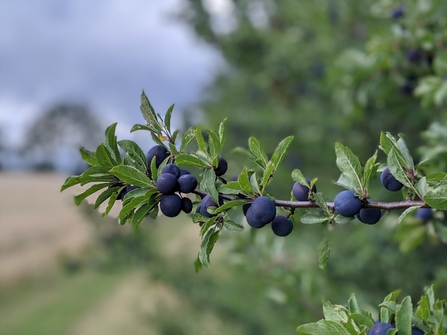
Sloe berries by Rebecca Neal
Sloe berries
Sloe berries can be used in preserves or to make sloe gin.
Old Sulehay Forest - Robert Enderby
Wild garlic
Various parts of wild garlic can be eaten: young leaves can be eaten fresh and mature leaves can go into stir fries, while the seedheads can be pickled or infused in vinegar.

Rose
Wild rose petals can be used to infuse vinegar or in jams.
Day 30: Reflect on your 30 wild days
It's the last day of 30 Days Wild! Where did that month go? Did you find that it went by in a flash? We did!
We hope that you enjoyed connecting with nature, with wildlife, with us and with others over the past month. Take a moment today to reflect on your 30 Days Wild experience: what did you enjoy most, what was your most exciting moment, how do you feel at the end of the month and how many of these activities would you do again?
Do you still have things you didn't get a chance to do or to try? Keep going! You can do a Random Act of Wildness anytime and anywhere.
Stay involved with the Wildlife Trust for Bedfordshire, Cambridgeshire and Northamptonshire and continue to help local wildlife by attending our fantastic events, donating so we can keep working for wildlife or becoming a Wildlife Trust member.
Thank you for joining us and see you next year!
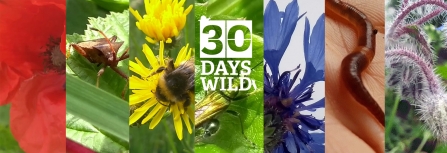
Week 4
Day 22: Go barefoot
Today we're asking you to do one of the most simple things you can do - take your shoes (and socks) off an go barefoot. Feel that grass under your feet and take a deep breath!
How relaxing what that?!
Nature improves your mental health, here's how and why - you can also find out more on our Nature, Health and Wellbeing page:
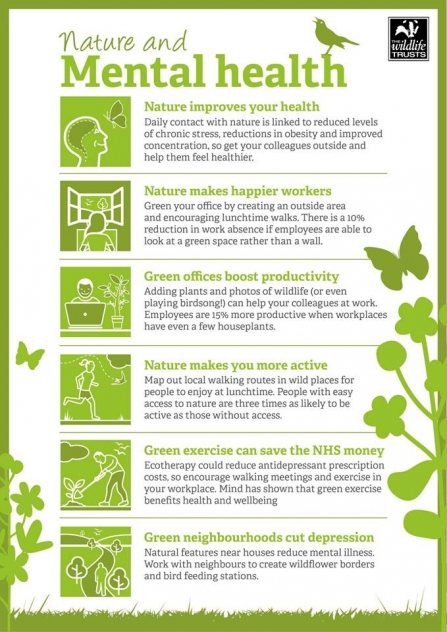
Day 23: Switch a household product
Chemicals can be harmful to natural habitats and the wildlife living in them. Check if brands are made from natural environmentally-friendly ingredients or if they are using sustainable packaging.
Can you can swap any of the products you use for more nature friendly ones - if you haven't already?
Here are some tips:
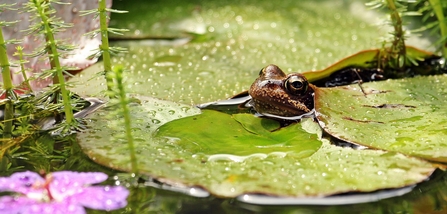
Day 24: Write to your MP
Writing to your local Member of Parliament (MP) can help them to understand a local nature issue you care about and it can have a huge impact. Whether it be a local wild place or species under threat - or that there are not enough green spaces where you live - letting them know what you think is good or not so good about the green spaces in your area can make a real difference.
For tips on writing a letter to your MP, or even arranging a meeting with them, click on the link below:
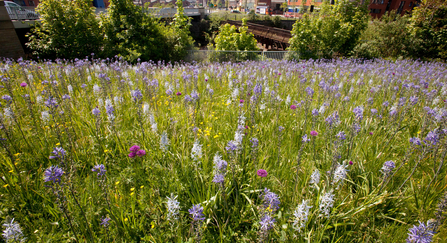
Wild flower planting in urban situation, Sheffield city centre - Paul Hobson
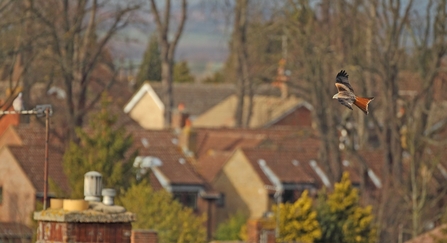
An urban red kite (Milvus milvus) flies past rooftops, Oxfordshire, UK - Luke Massey/2020VISION
Day 25: Exercise outside
There are so many health and wellbeing benefits to being outside and exercising!
Today, try our gentle wildlife yoga and see if you can imitate some of our favourite animals. If it's been raining where you are, you could also have a go at...
Day 26: Choose a colour and look for it in nature
In early summer, meadows, parks and gardens are in full bloom. Colourful butterflies, damselflies, dragonflies and other insects are crawling and flying about as the temperature goes up again after a cold snap in late spring. There is colour everywhere!
Choose a colour and see how many things you can find in that colour! You can use our wildlife explorer for inspiration or create your own colour coordinated spotter sheet.
What colour did you pick? How many different items did you find?
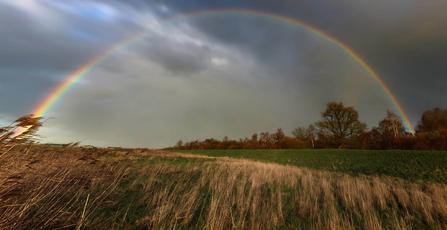
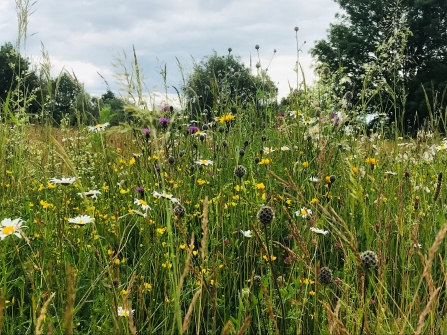
Photo by Becky Green
Day 27: Take action by donating to a nature appeal or signing a petition
Part of the work of the Wildlife Trusts, including the Wildlife Trust for Bedfordshire, Cambridgeshire and Northamptonshire, is to campaign for wildlife and advocate for better protection of wildlife and our natural environment.
Join us! Take action for wildlife and help look after local wild places. You can do this by donating and/or pledging your support to some of our campaigns:
- 30 by 30: the Wildlife Trusts, as a national movement, are calling for at least 30% of our land and sea to be connected and protected for nature’s recovery by 2030. Let's do this together: donate to our appeal
- Wave of hope: this year, the UK will host two critical summits – the G7 in June and COP26 in November. It’s time for global leaders to address the world’s biggest crises and work together for a recovery. Show that we stand united in asking for change by joining the Wave
- State of nature campaign: we must put nature's recovery into law before it's too late. Show your support for stronger nature protection: sign the petition urging the Prime Minister to make sure this crucial change gets through
- Ban the sale of peat: peat for compost is dug out of peatlands, which are very special (and incredibly wild!) habitats that also act as a carbon store, helping tackle climate change. Sign the petition to stop the extraction of peat
- Help bring beetles back: the Wild About Gardens campaign, set up by The Wildlife Trusts and the RHS, celebrates wildlife gardening and encourages people to use their gardens to take action to help support nature. This year the focus is on beetles and you can download a free guide for information on how to help them and also pledge a patch to beetles.
Another great way to support our ongoing campaigns and work, and keep up-to-date with what is happening locally and nationally, is to become a member.
Day 28: Hug a tree
Today's challenge is super simple: hug a tree! Don't just hug any tree... embrace one which has a special meaning to you or go exploring a green space near you to find an interesting one. From height and leaves to trunk and bark, trees have personalities - choose one which appeals to you.
How did hugging the tree make you feel? Could you get your arms around it or did you need others to join in? Did you feel more connected to nature?
If you want to remember the moment, why not bring along a piece of paper and a pencil to do a bark stencil? You can also turn your special tree into a tree guardian using the instructions in the activity sheet below.
Week 3
Day 15: Follow a bee or bumblebee
We've probably all seen a variety of pollinators buzzing around in the garden or the park by now. As soon as the flowers start blooming in spring there they are, darting about and whizzing from flower to flower. They are so important - without them a lot of plants wouldn't be able to produce fruits and seeds. Watch them crawl inside until only their bum sticks out or perform a wriggle dance: it's always a funny sight!
But can you keep up with one? How many flowers did it visit? Use the bee ID sheet below or this bumblebee ID page and see if you can identify which one you saw.
Why not go the extra mile and make your garden pollinator-friendly? Use the links below and download our free Gardening for Bees guide for inspiration.
Day 16: Create a map of your local wildlife or do some wild art
Today we're trying something a bit different - a sound map. Instead of using your eyes, use your ears to map wildlife around you. Sit in your garden or a green space and listen out for sounds then record them on a piece of paper. Natalie from Staffordshire Wildlife Trust shows you how it's done in the video below.
You can also have a go at creating some wild art. Here are some suggestions and you will also find a treasure trove of ideas on our Wilder Learning page or the Wildlife Watch YouTube channel and website.
*Remember, if you are using natural resources, only pick what is plentiful and/or has already fallen
How to make a sound map! (https://www.youtube.com/watch?v=5Q0kN8_uUmE)
Credit: The Wildlife Trusts - Wildlife Watch
Day 17: Create a hedgehog highway
Armed with up to 7,000 sharp spines, sprints up to 2 metres a second, able to climb walls and swim ponds - there's more to the humble hedgehog than you might think. But despite these superheroic qualities, hedgehogs are under threat. Their numbers have declined by about 30% since the millennium.
There are a few ways you can help hedgehogs. Creating a hedgehog highway allows them to move between green spaces for shelter or to find food (the activity sheet below provides instructions).
Once you have created a path for hedgehogs to get in, there are other things you can do to make your garden a hedgehog-friendly zone:
You could also consider sponsoring a hedgehog.
Day 18: Watch a wild webcam
Webcams are a great way to observe wildlife unobtrusively. You can place a webcam in a strategic place and then walk away. This means that animals will not be disturbed, which is really important if you want to see what is happening in a nest for example, and are therefore more likely to behave naturally. It's also easier to use a webcam when trying to catch a glimpse of nocturnal animals (no need to be up all night in the dark and cold waiting for something to happen!).
So no need to leave your comfy spot: with the webcams Wildlife Trusts have set up around the country you can watch osprey in Scotland, puffins in Wales, seals in Cumbria, or barn owls in Somerset, among others, from wherever you are.
Below is some webcam footage from our Trust.
Attention!
This weekend is the Big Wild Weekend! The Wildlife Trusts are hosting some fun events online all weekend, from campouts to quizzes, so please join in. See you there!
Nene Wetlands blue tit nestlings (https://youtu.be/3vexGk7nVMo)
Nene Wetlands blue tit nestlings
Water Vole Cambourne Henry Stanier (https://youtu.be/tBuUtyGRuVE)
Water Vole at Cambourne. Credit: Henry Stanier
Pygmy Shrew Brampton Wood NR Henry Stanier (https://youtu.be/6BZk_Chq6dc)
Pygmy Shrew at Brampton Wood. Credit: Henry Stanier
Day 19: Camp indoors or outdoors
Camping is a great way to connect with nature - and with each other. It's also lots of fun! So whether you huddle up in the living room for an indoor campout while you watch our Big Wild Weekend online live stream, or head outside for a wild camping experience, enjoy the sights and sounds of being in a new place.
If you are feeling adventurous, you could also have a go at building a shelter using dead wood in a green space near you.
How to build a survival shelter
This weekend is the Big Wild Weekend, don't miss out on all the fun! You will find the schedule below - though we hear that there may be some other surprises in store!
Day 20: Watch sunrise or sunset
We hope that you enjoyed last night's Big Wild Camp-out!
The beginning and the end of the day are the best times to see wildlife as quite a few species will be most active then. If you were camping out last night, why not try and get up early so you can listen to the dawn chorus.
If the weather is not up to it, have a go at the activities below.
Don't miss out on today's Big Wild Weekend Activities!
- 9 am: Big Wild Tai Chi
- 3 pm: Big Wild Kid’s Quiz
- 7 pm: Big Wild Quiz
Day 21: Identify a wildflower
We are now in early summer and after a spell of hot weather and some rain things are growing fast! Have you been admiring the different coloured flowers popping up everywhere?
Wildflowers are generally considered to be plants that grew without being planted by anyone - though this term is also used to refer to flowers which are wildlife-friendly, like the wildflower seeds you planted during 30 Days Wild. So this could be anything from a wild meadow to a plant growing in a crack in the pavement outside your house, or a beautiful patch of wildflowers in your garden.
It's worth getting to know them and what wildlife they attract. Use the spotter sheets below and our Wildlife Explorer to find out more. You can also take a look at our Wildlife Gardening page for more inspiration and pledge to help wildlife in your garden by joining our Wild About Gardens campaign.
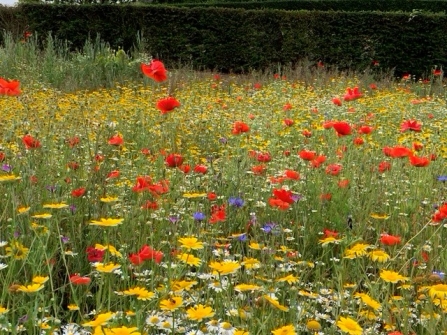
Fiona Mansfield
Kate is doing 30 Days Wild with her 3 month old son, Arthur. Click on the image to see their adventures.
Week 2
Day 8: Have a plastic free day
Plastic is a big threat to wildlife because it breaks down into small pieces that can be ingested. But you can help. Go a day without using any one-use plastic. You'll be surprised at the difference you can make!
You could also try having a waste free lunch.
Day 9: Listen to bird song
From the melodious robin, blackbird and blackcap to the strident wren or the repetitive chiffchaff and great tit, there are many different types of bird song. Whilst they are often most vocal early in the day, you can hear birds calling throughout the day. Stop and listen a few times today, can you hear any? Do you recognise them?
Click on the link below to hear the song of some of our common birds.
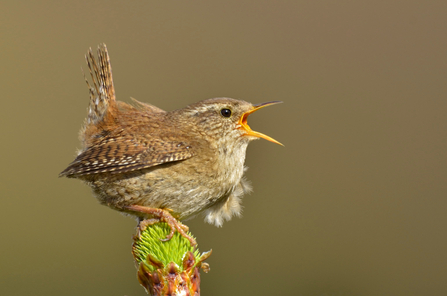
Wren - Andy Rouse/2020VISION
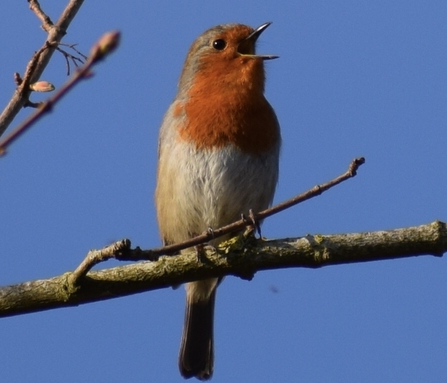
By Harry Hog
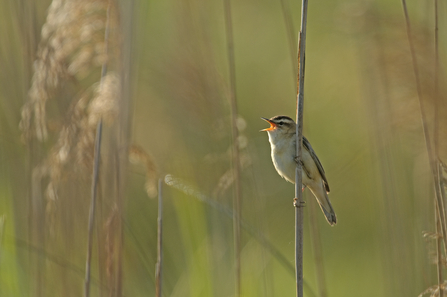
Reed bunting singing Chris Gomersall/2020VISION
Day 10: Create a log pile for bugs and beetles
41% of insect species face extinction. The loss of their habitats and overuse of pesticides are two major reasons why these little creatures are dying out eight times faster than large mammals.
However, it’s not too late and with your help, we can put insects into recovery. One thing you can do is to put some insect shelters in your garden. Click on the links below or use the instruction sheet for guidance.
You can find out more about bringing back our beetles with this special guide from our Wild About Gardens Campaign. You can also request your free Action for Insects guide.
Day 11: Recording wildlife and grass trumpet
Recording plants and wildlife allows us to monitor how they are doing. This is particularly important for populations in recovery or declining to try and ensure the survival of the species. Find out more about how we do this.
If you have seen any of the following, please click on the links for information on how to report the sightings:
Use the activity sheet below as inspiration to record some wildlife around you.
You can also have a go at making natural music instruments.
Day 12: Set up a moth trap
There are more than 2,500 species of moth in the UK. This is many more than the 60 types of butterfly we have. One way to tell them apart is to look at their antennae - butterfly ones tend to be thicker at the end.
While some moths do fly during the day, most are active at night. A good way to see night time moths is to set up a moth or light trap. You will find instructions on how to set up a simple one below and the spotter sheet will help you identify them.
Day 13: Go on a minibeast hunt
There are some 27,000 types of insect in the UK and you might have a couple thousand different types living near you without realising it! Take a closer look in your garden or nearest green space and see how many of these colourful and characterful minibeasts you can find. Our latest blog introduces a few common ones, and you can also use the spotter sheets to record what you find - how many did you see?
Minibeast spotter sheet 1 Minibeast spotter sheet 2
Below you will find a couple of simple traps you can set up to take a closer look at minibeasts - but don't forget to release them once you've admired them!
Day 14: Look for a bat
We're halfway through 30 Days Wild already!
Today we are putting the spotlight on bats and we have some fabulous blogs which will help you find out more about these iconic mammals. They are nocturnal so you will only be able to see them when it's dark: before dawn or after dusk.
- An introduction to UK bats: the lowdown on these marvellous mammals
- Top tips from the real bat man: easy preparations to improve your bat spotting experience
- Bats in the mist: learn more about these fabulous nocturnal creatures on our nature reserves
- The technical side of bat surveying: information about bat detectors
You could also build your own bat box or make your garden more bat friendly.
Bat Swarm at Dawn (https://www.youtube.com/watch?v=pAfy8QYxxX8)
This video was shot on a BCT training course in South Wales and shows an impressive number of soprano pipistrelles flying around and entering the roost in a house. Credit: natureheads on YouTube
Week 1
Day 1: Have breakfast outside
What better way to kick off the month than to sit down outdoors and enjoy the morning hubbub of wildlife? Take your cup of tea, bowl of cereal or toast outside for some fresh air and soak it up. Even cracking open a window will allow you to connect with nature.
Birdsong, rustling grasses and leaves, creaking branches... what have you heard or spotted? You can use our handy Big Wild Breakfast placemat as a spotter sheet. You can also tell us about your sightings on this page or via social media.
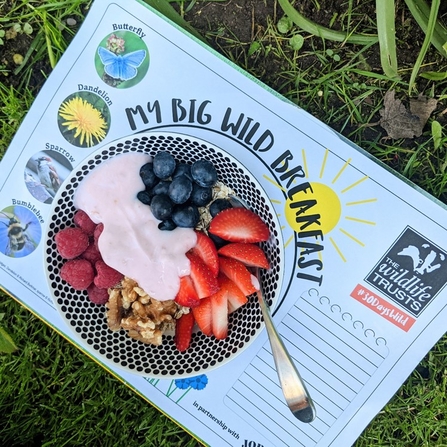
Day 2: Plant wildflowers
A garden or yard is a valuable home for wildlife by night and day, and is also a vital refuge for many kinds of wildlife. Anything we do to help, no matter how small, adds up to make a big difference for the future of native species.
That's why we're asking you to plant some wildflower seeds today. Even a flower pot on a windowsill will do! Here are also some handy tips for wildlife gardening.
Click on the image for a full size version.
Day 3: Explore a reserve
Did you know that the Wildlife Trust for Bedfordshire, Cambridgeshire and Northamptonshire manages over 100 reserves across the three counties? And together, the 46 Trusts of the Wildlife Trust movement manage over 2,300 reserves or 98,000 football pitches of wildlife-rich land?
Today we celebrate these wild spaces and recognise their importance in protecting the survival of the close to 88,000 different species of animals, plants and fungi we have in the UK. Not that we need any excuse to get out and enjoy these wonderful places!
Ramsey Heights Nature Reserve
Day 4: Sketch from nature
All you need today is a piece of paper and a pencil. Then find a good spot and have a look around - what do you see? A gnarly tree? Soft tall grasses? A beautiful wildflower? Birds at the bird feeder? A creepy crawly? See if you can draw them! If you want you can then add some colour with pens or paint.
Here are some other ideas for you to try (click on the images to view the detail).
Day 5: Go on a mini litter pick
Today is World Environment Day! The theme this year is ecosystem restoration which means preventing, halting and reversing the damage done to nature and to go from exploiting nature to healing it.
Let's do our bit by tackling one of the issues affecting our local area and wildlife: litter. Grab a bin bag and some gloves and head out to your nearest green space - what did you collect?
Day 6: Take a wild photo
You can use the video below as inspiration but you don't need a fancy camera to take wildlife pictures. You can take photos of insects, wildlife, or even the clouds in the sky with any camera or camera phone. You can find some additional tips on wildlife photography here.
If you don't have a camera to hand, have a go at making your own binoculars instead.
Don't miss this evening's Webcam Wildlife online special event: get stuck into the world of webcam wildlife with BBC Springwatch and The Wildlife Trusts' ambassador Hannah Stitfall. You can register here.
Day 7: Read a nature book, blog or poem
Check your bookshelf today and find a passage, poem or short story in which nature features prominently. Do you have any favourites - do let us know!
You can also use this opportunity to find out more about some of the many wonders of nature. Here are some of our top blogs from last year, or you can find your own blog to read:
- Starling murmurations
- How does my wildflower garden grow
- Wildlife photography showcase - Kevin Lunham
- The brilliance of beetles
- The Great British Snake Off
- Living with spiders
- Woodpeckers in the UK
- Nurture your nettles
- The secret world of fungi
- Amazing aquatic plants
Why don't you have a go at writing about nature? You can describe your favourite animal or describe your favourite place.
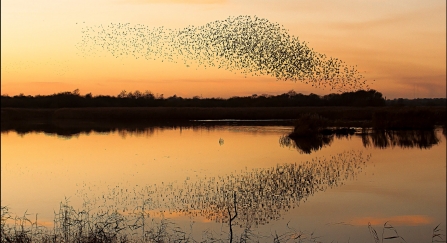
Jamie Hall


